NETHERLANDS
Maastricht

Maastricht
Maastricht
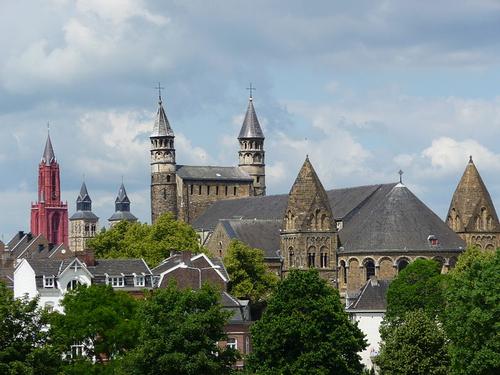 MaastrichtFoto: CumulusNL CC 3.0 Unported no changes made
MaastrichtFoto: CumulusNL CC 3.0 Unported no changes made
Maastricht is perhaps the least Dutch city in the whole of the Netherlands. You really have the feeling that you are already a bit abroad. This is probably partly due to its location in the very south of the Netherlands on the border of Belgium and Germany. But also because of the overall atmosphere in the city. The charm of Maastricht has been preserved in part because the city escaped war damage during the Second World War. There are a number of different civilizations that have contributed greatly to today's Maastricht over the years. The pan-European character is also reflected in the many, often good, restaurants. Maastricht is a Burgundian city with many star restaurants. Due to the presence of the university, there are many students in Maastricht and this ensures a lively cityscape and nightlife.
 Vrijthof MaastrichtPhoto: Arne Hückelheim CC 3.0 Unported no changes made
Vrijthof MaastrichtPhoto: Arne Hückelheim CC 3.0 Unported no changes made
Maastricht has many beautiful squares, streets, churches and museums. The Vrijthof is the most famous square in the city and a meeting point for both residents and tourists. The market with the beautiful town hall is definitely worth a visit. The Maas meanders through the city and has always been Maastricht's lifeblood. The Bonnefanten museum is located on the Maas and is a big crowd puller because of the special building alone.
| advertisement |
| Hotels Maastricht |
Location
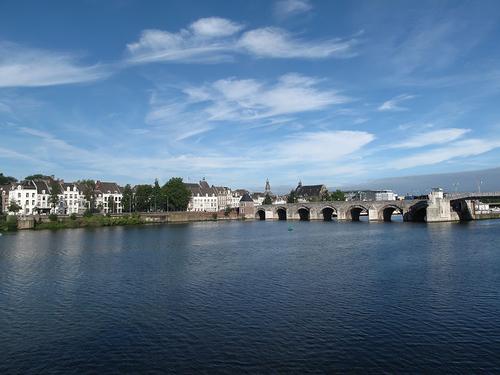 River Maas near Maastricht Photo: Michielverbeek CC 3.0 Unported no changes made
River Maas near Maastricht Photo: Michielverbeek CC 3.0 Unported no changes made
Maastricht is located in the extreme southeast of the Netherlands with Belgium and Germany a short distance away. Maastricht is the capital of the province of Limburg and the river Maas flows through the city. The city is located at the foot of the Sint-Pietersberg (109 meters), where the river Jeker flows into the Maas. The center of Maastricht is located 50 meters above NAP.
Weather
The weather in Maastricht is moderate and somewhat similar to that of the rest of the Netherlands, but due to its location quite deep in the country, the sea has less influence on the climate than in the rest of the Netherlands. As a result, it can be slightly colder in winter and slightly warmer in summer. Maastricht can sometimes suffer from the weather in other places. If it rains a lot upstream, the Maas can burst its banks. The temperature in the summer months is an average of 23 degrees Celsius, which is a great time to visit Maastricht. But in spring and autumn there are still many sunny days and in winter skating on the Vrijthof has its charm.
History
Traces of human habitation have been found dating back to the Ancient Stone Age, that is about 250,000 years ago, but the real history starts with the Romans. Maastricht was founded in 50 BC as a Roman colony. Roman troops were undoubtedly attracted by its strategic location on the banks of the river Maas. They soon built a military camp on both banks and the settlement's name was Mosae Trajectum. The name of the city of Maastricht is probably derived from this. A castle was built to defend the settlement, as well as a bridge across the river on the orders of Emperor Augustus. The bridge facilitated trade with France and Germany.
Maastricht acquired considerable religious significance during its early history. In the 4th century AD, Christianity took root here. The first church and religious community was founded by St. Servatius. Maastricht was also a bustling trading city, where the bridge continued to play a vital role.
In 1220 Maastricht was granted city rights. The city was ruled by the Duke of Brabant and the Prince-Bishop of Liège, which was a difficult alliance. In the 16th century, Maastricht reached the peak of its prosperity. The city attracted craftsmen, especially goldsmiths. At that time, the Netherlands was ruled by the Spaniards.
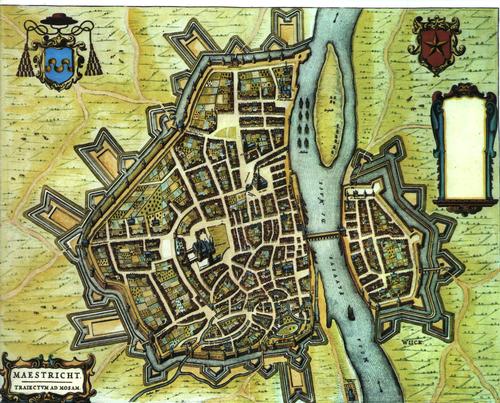 Maastricht map from 1652Photo: Public Domain
Maastricht map from 1652Photo: Public Domain
Spanish rule was not popular, certainly not in Maastricht. In 1576 the city revolted against the rulers. However, the uprising failed and it was not until 1632 that Maastricht succeeded in liberating itself and returning to a Dutch government. Frederick Henry brought a whole new era of political stability. More importantly, the new government encouraged a greater degree of religious tolerance.
In the early 19th century, political boundaries were redrawn and a new state brought the Netherlands and Belgium together. That was meant to make a fist against the neighboring powers. The ten-day campaign ended this alliance and the Netherlands and Belgium continued separately. Although Maastricht would technically be part of Belgium, the city decided to remain loyal to the Netherlands under the Dutch Royal House of Orange.
Later in the 19th century, the industrial revolution also came to Maastricht. The city became known for its pottery factories, including those of Petrus Dominicus Laurentius Regout. There were also many paper factories in Maastricht. The speed with which the city grew was enhanced by the arrival of the railway.
Maastricht's neutrality during World War I meant that the consequences of the war were perhaps felt less severely here. Nevertheless, the city was still suffering. Streams of refugees came in search of homes and food. During the Second World War, Maastricht was occupied by German troops. Maastricht was liberated in 1944.
After the war, a new period in the history of Maastricht began. It was a time when Maastricht could focus on the restoration of the historic buildings and the construction of a new, more optimistic city. In 1991 the city became known for giving its name to a European treaty. Maastricht is now a city that has something for everyone. It is a student city and a place where many visitors enjoy a day of shopping.
Sights
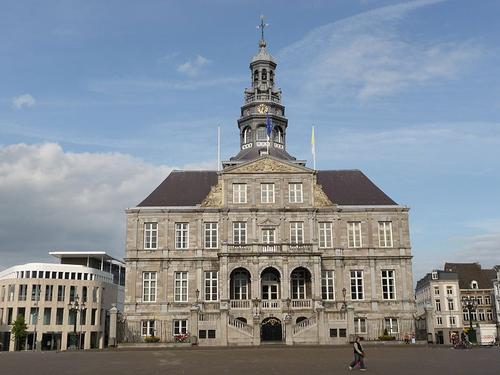 Maastricht Old TownhallPhoto: Phernambucq CC 3.0 Unported no changes made
Maastricht Old TownhallPhoto: Phernambucq CC 3.0 Unported no changes made
The most favorite activity of tourists is walking around the old town. Here you will see numerous sights and in the meantime nice shops and galleries beckon. Some important sights are described below. The numerous public squares in the center of Maastricht are surrounded by good quality tourist attractions. Simply strolling around these squares provides one of the best and easiest ways to look around. Many seductive streets are located directly south of the Vrijthof, where you will discover a medieval labyrinth. The Onze Lieve Vrouweplein is full of terraces, which is dominated by the eponymous church, the Onze Lieve Vrouwe basilica. The Grote Markt is known for the old town hall that was built in the middle of the 17th century as a cloth hall. The Dutch architect and painter Pieter Post, known for the Mauritshuis, among others, designed this charming building on the Markt.
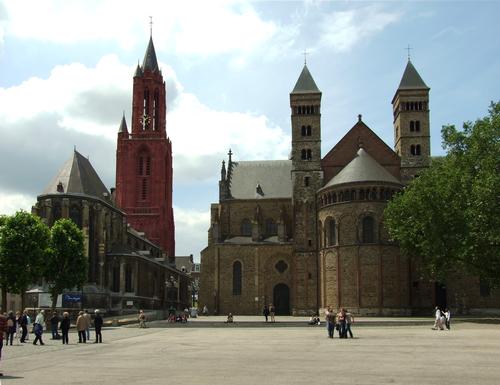 Maastricht Vrijthof St Servaas and Sint JanPhoto: Euku CC 3.0 Unported no changes made
Maastricht Vrijthof St Servaas and Sint JanPhoto: Euku CC 3.0 Unported no changes made
The Vrijthof is dominated by the Basilica of Saint Servatius, which dates back to the 6th century. Over the years, this Catholic Church has been rebuilt and renovated several times. The historic part of the St. Servaas basilica is actually more than 1000 years old, which makes this church not only the oldest church in Maastricht, but in the whole of the Netherlands. The church is in the Gothic architectural style, has a treasury and an entrance decorated with religious statues. The Basilica of Saint Servatius is now an important Dutch monument and is listed as a World Heritage Site by UNESCO. In the neighborhood and around the Vrijthof you will find the Vrijthoftheater and the Sint Janskerk.
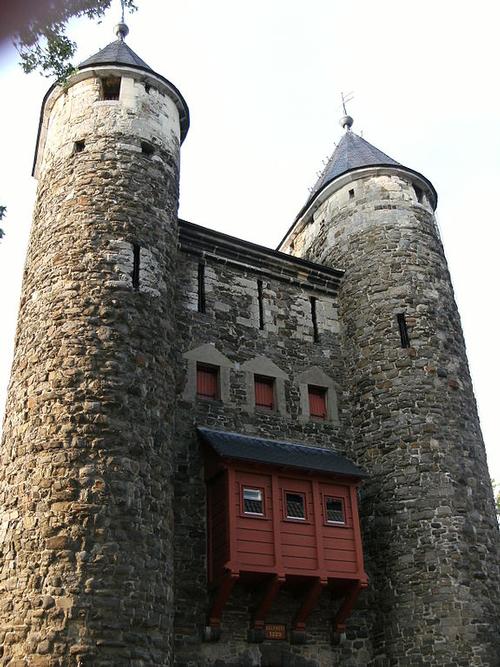 Maastricht HelpoortPhoto: Mark Ahsmann CC 3.0 Unported no changes made
Maastricht HelpoortPhoto: Mark Ahsmann CC 3.0 Unported no changes made
The Helpoort (1229) is the oldest surviving city gate in the Netherlands. The gate was built nearly 800 years ago, along with a long stretch of the city wall. Further fortifications were added in the 15th century and today the Helpoort is an interesting part of local history. The Helpoort was once actually used as a prison. When you climb to the top of the tower you have an excellent view of the city. A number of other historical sites are nearby, such as the Jekertoren.
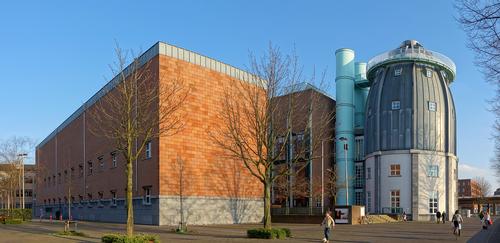 Maastricht Bonnefanten MuseumPhoto: Velvet CC 3.0 Unported no changes made
Maastricht Bonnefanten MuseumPhoto: Velvet CC 3.0 Unported no changes made
Aldo Rossi is the creator of the Bonnefanten Museum, which is best known for its 28-meter high tower. The Bonnefanten Museum opened its doors in 1995 and features a number of old masters (Breughel, Rubens), medieval sculptures and modern works of art.
The Natural History Museum Maastricht is ideal for families, you can see fossils from all over Limburg, stuffed animals and even some remains of giant tortoises. The museum is located in the Jeker quarter, the most famous resident of the museum is the Mososaurus.
Tips
Take a nice boat trip along the Maas. There are various options and you can see a number of interesting sights of Maastricht from a different perspective. In high season, a day trip to Liège in nearby Belgium is particularly popular.
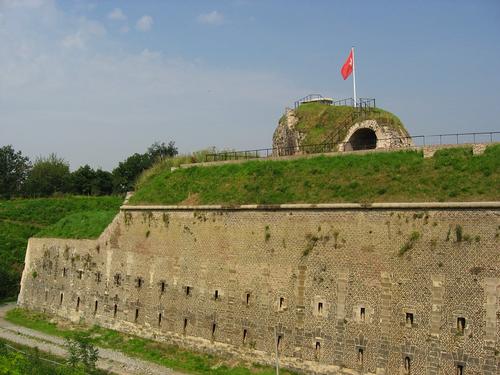 Maastricht Fort Sint PieterPhoto: The Sundowners CC 3.0 Unported no changes made
Maastricht Fort Sint PieterPhoto: The Sundowners CC 3.0 Unported no changes made
The fort high on the Sint Pietersberg dates from 1701. The fort was built to protect the city against attack. Now open to the public, you can learn more about the history of the city and its fortress. You can book a tour of the fort and the marl caves below. Many fossils have been found in the caves.
Visit the unique bookstore in the Dominican Church. A bookshop has been established in the old Dominican church since 2006, which is perhaps the most beautiful in the Netherlands. You can also have a great lunch or a cup of coffee and experience the special atmosphere.
Useful links Maastricht
BBC Country ProfilesWorld Fact Book Explore all Countries
How to call
Last updated June 2025
Copyright: Team - The World of Info